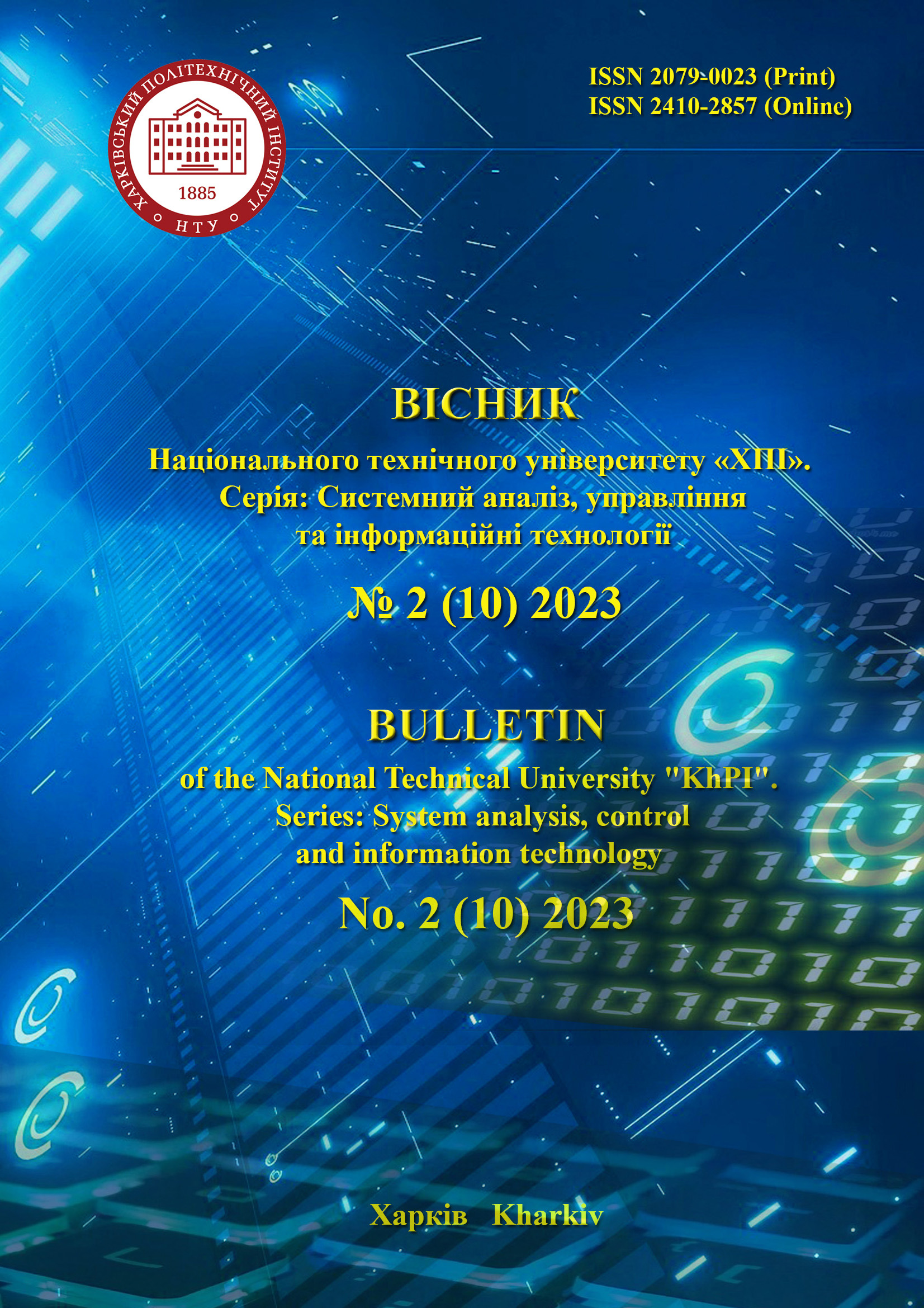ALGORITHM AND SOFTWARE OF MEDICAL PERSONNEL SELECTION SYSTEM
DOI:
https://doi.org/10.20998/2079-0023.2023.02.07Keywords:
personnel selection, automation, data processing, algorithm, software, system architecture, development technologiesAbstract
There is a lot of routine work in any organization, including in recruitment agencies. Effective management organization and automation of activities of employees of recruiting agencies is not an easy task. The system should automate the routine actions of workers of recruiting agencies and be convenient for their clients. This paper proposes an approach to automating the selection of necessary medical staff. Not all information systems used by recruiting agencies can compare candidates and generate results that include several of the best candidates. Based on the analysis of the subject area, groups of parameters that significantly affect the choice of medical personnel were determined. The proposed approach is to analyze the request from the client, and then in the system find requests of other clients similar to it in terms of parameters, for which a candidate has already been found. The next step is to take the profiles of healthcare professionals that have been suggested for these requests (they act as benchmarks) to further compare them with existing candidates. Each employee profile parameter has its own similarity function. Available candidates will receive scores and will be ranked. We also additionally adjust the assessment by comparing candidates with the current request. Software was developed to automate the selection of medical personnel. For its implementation, a three-level client-server architecture is proposed. MVC (Model View Controller) architecture was chosen for the server part. The Single Page Application architectural template is used for the client part. The server part is divided into three layers, which further demarcate and structure the responsibilities of the system components. .NET technologies are used to implement business logic. SQL Server is used for the server and database provider. The use of the software implementation of the developed system demonstrated quite good results. The average time for selecting the 10 best candidates out of 500 is 0.4 seconds, and the processing of only 1 resume by a person takes several minutes.
References
Jones M. T. Recommender systems, Part 1. Introduction to approaches and algorithms. Available at: https://api.semanticscholar.org/CorpusID:13864749 (accessed 15.11.2023).
Codina V. A. Recommendation System for the Semantic WEB. Available at: http://www.lsi.upc.edu/~vcodina/papers/dcai10 (accessed 07.10.2023).
Chandrashekhar H., Bhasker B. Personalized recommender system using entropy-based collaborative filtering technique. Available at: https://www.proquest.com/docview/889977175 (accessed 05.10.2023).
Smith B., Linden G. Two Decades of Recommender Systems at Amazon.com. Available at: https://ieeexplore.ieee.org/document/7927889 (accessed 20.09.2023).
Singular Value Decomposition (SVD) & Its Application in Recommender System. Available at: https://analyticsindiamag.com/singular-value-decomposition-svd-application-recommender-system/ (accessed 10.10.2023).
Seeda P. A. Complete Guide to Recommender Systems – Tutorial with Sklearn, Surprise, Keras, Recommenders. Available at: https://towardsdatascience.com/a-complete-guide-to-recommender-system-tutorial-with-sklearn-surprise-keras-recommender-5e52e8ceace1 (accessed 25.09.2023).
Aditya S., Rajora M., Singh I. Hybrid Recommendation System for Item Cold Start Problem. Available at: https://doi.org/10.1109/SMARTGENCON51891.2021.9645839 (accessed 07.10.2023).
Narducci, F., Lops, P., Semeraro, G. Power to the patients: The HealthNet social network. Available at: https://doi.org/10.1016/j.is.2017.07.005 (accessed 12.10.2023).
Han Q., Martinez de Rituerto de Troya I., Ji M., Gaur M., Zejnilovic L. A Collaborative Filtering Recommender System in Primary Care: Towards a Trusting Patient-Doctor Relationship. Available at: https://doi.org/10.1109/ICHI.2018.00062 (accessed 13.10.2023).
Waqara M., Majeed M., Dawood H, Daud A. An adaptive doctor-recommender system. Available at: http://dx.doi.org/10.1080/0144929X.2019.1625441 (accessed 14.10.2023).
Implementing the Unit of Work Pattern in Clean Architecture with .NET Core. Available at: https://medium.com/@edin.sahbaz/implementing-the-unit-of-work-pattern-in-clean-architecture-with-net-core-53efb7f9d4d (accessed 03.11.2023).
Everything you need to know about MVC architecture. Available at: https://towardsdatascience.com/everything-you-need-to-know-about-mvc-architecture-3c827930b4c1 (accessed 29.10.2023).
Tutorial: Create a web API with ASP.NET Core. Available at: https://learn.microsoft.com/en-us/aspnet/core/tutorials/first-web-api (accessed 04.11.2023).
Do Recruiters Really Only Spend 6 Seconds Reading Your Resume? Available at: https://newsletter.jobsearch.guide/p/do-recruiters-really-spend-6-seconds (accessed 14.11.2023).
Downloads
Published
How to Cite
Issue
Section
License

This work is licensed under a Creative Commons Attribution 4.0 International License.
Authors who publish with this journal agree to the following terms:
- Authors retain copyright and grant the journal right of first publication with the work simultaneously licensed under a Creative Commons Attribution License that allows others to share the work with an acknowledgement of the work's authorship and initial publication in this journal.
- Authors are able to enter into separate, additional contractual arrangements for the non-exclusive distribution of the journal's published version of the work (e.g., post it to an institutional repository or publish it in a book), with an acknowledgement of its initial publication in this journal.
- Authors are permitted and encouraged to post their work online (e.g., in institutional repositories or on their website) prior to and during the submission process, as it can lead to productive exchanges, as well as earlier and greater citation of published work (See The Effect of Open Access).


